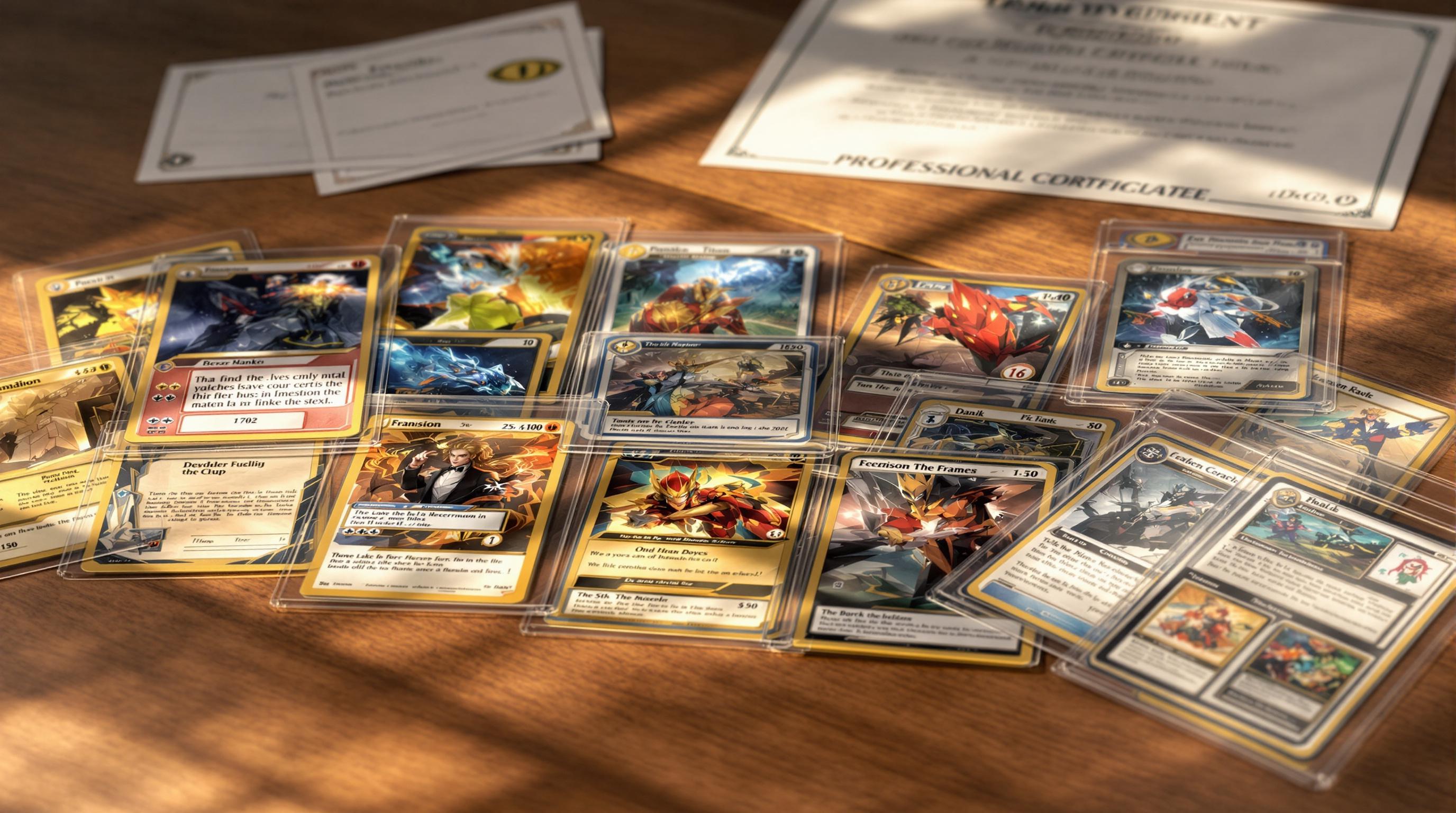Rookie seasons can make or break the value of sports cards. Players with standout first years often see their card prices soar, while poor performances can lead to declines. Key factors include stats, awards, team success, and fan popularity. For example, Tom Brady’s rookie card, now worth over $2 million, highlights how career success can elevate a card’s value.
Key Takeaways:
- Performance Matters: Strong rookie stats or awards (e.g., Rookie of the Year) boost card value, while injuries or underperformance hurt it.
- Popularity Drives Demand: Media attention and fan loyalty significantly influence card prices.
- Market Trends: Timing, limited editions, and grading condition (e.g., PSA 10) can amplify value.
For collectors, focusing on high-grade rookie cards of consistent performers and tracking market trends is crucial. Tools like Card Shops List can help navigate this dynamic market.
The Five Categories of Sports Card Investing
1. Player Performance
The way players perform in their rookie seasons has a direct impact on the value of their trading cards. Stats, awards, and team success all play a role in shaping the market value of these cards.
How Performance Affects Value
Recent examples highlight how on-field success influences card prices. For instance, Patrick Mahomes' football card values rose by 4% after his Super Bowl win, showing how major achievements can attract market attention. On the flip side, Jalen Hurts saw a 6% drop in card values following his Super Bowl loss [3].
Rookie seasons are especially important because they hint at a player's future potential. Early accomplishments, like winning Rookie of the Year or being selected as an All-Star, often lead to noticeable value jumps. A great example is Stephen Curry's rookie cards, which gained value thanks to his standout first-year performance [3].
Grading and Card Condition
The condition of a card is crucial, especially for rookie cards of standout players. High-grade cards authenticated by services like PSA often sell at premium prices. This is particularly true for players who excel during their rookie seasons [1].
"The longer a player stays in the league and maintains a high level of play, the more valuable their rookie card becomes. Players with long and successful careers often see the value of their rookie cards rise over time." [1]
For collectors looking to capitalize on rookie performance trends, platforms like Card Shops List can help find dealers who specialize in evaluating and grading rookie cards.
Market Reactions
Big performances and milestones during a season can spark immediate changes in the market. It’s not just about stats; it’s about how those stats resonate with fans and collectors, shaping both short-term and long-term value.
While performance is a major factor, a player's overall popularity can either boost or dampen the market's reaction to their rookie success.
2. Popularity
A player's popularity plays a big role in determining the value of their rookie cards, often amplifying the effects of their performance on the field. Fans and media attention can create noticeable value differences, even among players with similar stats.
Media Influence and Fan Demand
The connection between popularity and rookie card value is especially clear with well-known athletes. Take Tom Brady, for example. His rookie cards, released in 2000, have skyrocketed in value thanks to his massive fan base and consistent media presence. These factors have made his cards some of the most desirable in the market [1][2].
Special editions and limited releases of rookie cards for popular players often fetch higher prices. This is especially true when media coverage and fan engagement remain strong [2][4]. Career achievements, regular media attention, and a loyal fan base all contribute to the long-term rise in rookie card value.
Timing and Market Trends
When a rookie card is released can also influence its value. Cards issued early in a player’s career might start with modest prices but can see major growth as the player gains popularity [1][2].
Platforms like Card Shops List provide valuable insights into market trends and player popularity, helping collectors make smarter choices when investing in up-and-coming talent.
While a player’s popularity drives demand and pricing, broader market trends also have a big impact on rookie card values.
sbb-itb-0db97a5
3. Market Trends
A player's rookie season can set the tone for their card value, with achievements and milestones often driving price changes. Recent data highlights how major accomplishments, like championship wins, can cause noticeable shifts in value. Winning teams tend to see moderate price increases, while losing teams often experience declines [3].
Performance and Price Changes
Rookie-season milestones, such as winning a championship or earning a Rookie of the Year award, play a big role in shaping card values. Early promotions of top prospects also boost their visibility, making their performance during this period even more influential on the market.
Market Timing and Dynamics
The MLB's decision to promote top prospects earlier has created more opportunities for rookie card investments. Rare, high-grade rookie cards of standout players often fetch premium prices, especially when tied to strong rookie-season performances. This trend is even more pronounced when players generate early excitement with their promotions.
Long-Term Value Trends
Rookie cards of players who maintain strong performances over time typically see significant appreciation. Collectors who closely follow performance metrics and market timing often make smarter investment decisions. Tools like those from Card Shops List can help investors track trends and spot opportunities in this ever-changing market.
While understanding these trends can lead to profitable investments, collectors must remain cautious and aware of potential risks.
Advantages and Disadvantages
Understanding how rookie seasons influence card values requires a closer look at both the opportunities they create and the risks they carry.
| Factor | Advantages | Disadvantages |
|---|---|---|
| Performance Metrics | • Strong rookie stats or awards can greatly increase card value • Championship wins often add lasting value |
• Poor rookie performance may permanently hurt value • Injuries decrease collector interest • Inconsistent play leads to price swings |
| Market Timing | • Early hype boosts visibility • Impressive debuts spark immediate demand • Limited supply can drive up prices |
• Overproduction or early investments may lower long-term value • Seasonal changes can impact liquidity |
| Investment Potential | • High-grade cards often deliver strong returns • Rare parallels add exclusivity • A standout rookie season can build long-term value |
• Grading fees cut into profits • Speculative markets can inflate prices • Future performance remains unpredictable |
Rookie performance plays a crucial role in determining card values. For example, players like Patrick Mahomes and Stephen Curry saw their card values soar after exceptional rookie seasons [3].
Resources such as Card Shops List can help collectors navigate these dynamics, especially when assessing new talent. High-grade, rare rookie cards tied to consistent performers often command higher prices. However, market trends can shift quickly if a rookie underperforms.
Investing early in promising rookies can lead to impressive returns, but it comes with risks. Savvy collectors often spread their investments across multiple players and focus on the long-term growth of their collections.
Rookie seasons offer both opportunities and challenges. Collectors who carefully evaluate these factors are better equipped to make smarter investment decisions.
Conclusion
Rookie card investments can be tricky, but understanding their ups and downs helps you better navigate this ever-changing market. Rookie seasons play a big role in shaping card values, influenced by player performance, market trends, and collector interest. Key factors like how well a rookie performs, media coverage, and timing all come together to impact these values.
Take Tom Brady's rookie card, for example. It's now worth over $2 million in PSA 10 grade - a testament to the potential of these investments [1]. That said, not every rookie card will reach such astronomical levels, so it's important to keep expectations realistic.
For collectors looking to succeed in this market, tools like Card Shops List can connect you with specialized dealers and trading opportunities. Keep an eye on performance stats, timing, card condition, and rarity to spot promising rookie cards.
Rookie seasons are a crucial time for evaluating and building card value. By combining solid research, market awareness, and helpful resources like Card Shops List, collectors can better navigate this challenging and rewarding market.


